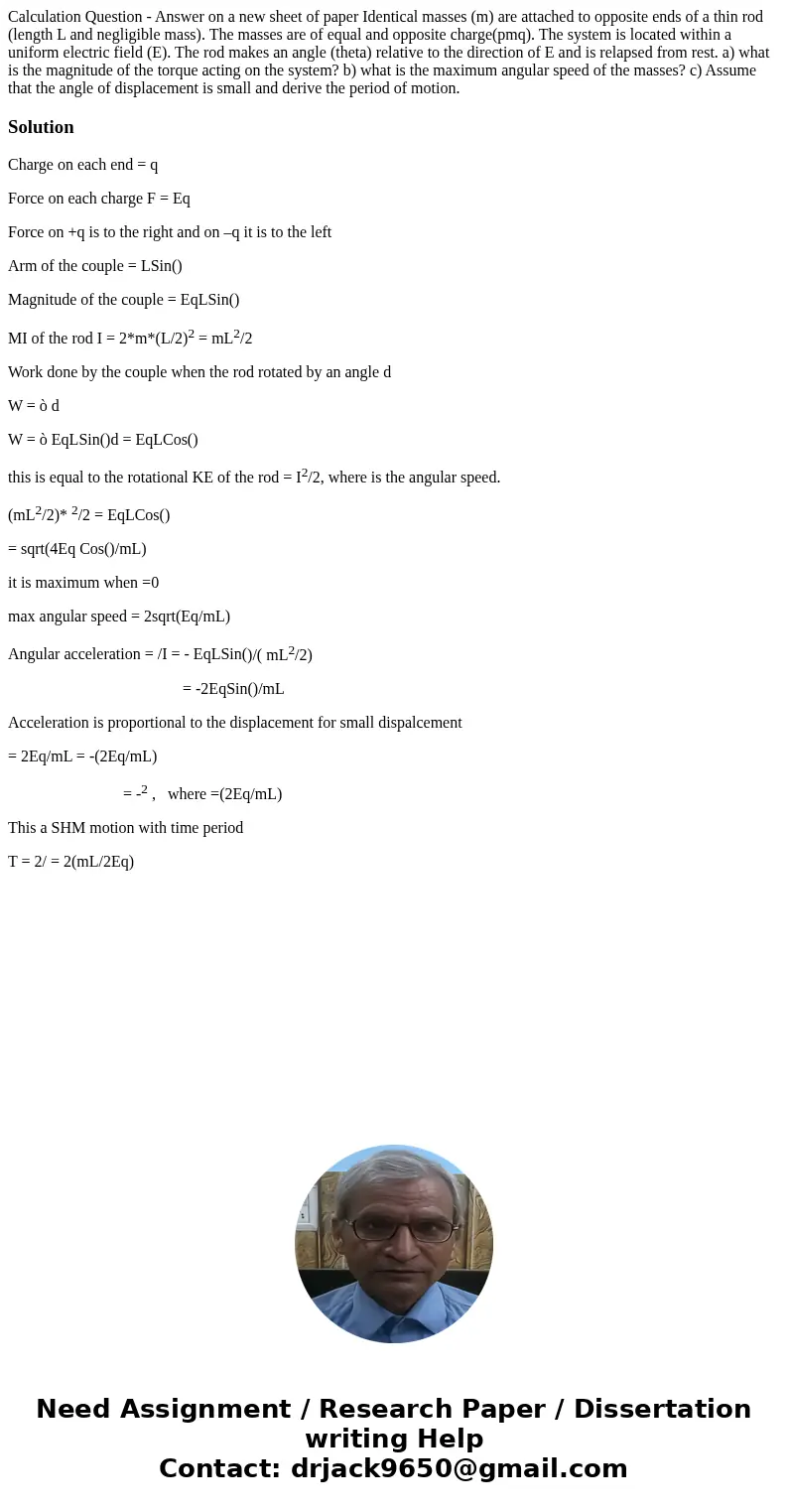Calculation Question Answer on a new sheet of paper Identic
Solution
Charge on each end = q
Force on each charge F = Eq
Force on +q is to the right and on –q it is to the left
Arm of the couple = LSin()
Magnitude of the couple = EqLSin()
MI of the rod I = 2*m*(L/2)2 = mL2/2
Work done by the couple when the rod rotated by an angle d
W = ò d
W = ò EqLSin()d = EqLCos()
this is equal to the rotational KE of the rod = I2/2, where is the angular speed.
(mL2/2)* 2/2 = EqLCos()
= sqrt(4Eq Cos()/mL)
it is maximum when =0
max angular speed = 2sqrt(Eq/mL)
Angular acceleration = /I = - EqLSin()/( mL2/2)
= -2EqSin()/mL
Acceleration is proportional to the displacement for small dispalcement
= 2Eq/mL = -(2Eq/mL)
= -2 , where =(2Eq/mL)
This a SHM motion with time period
T = 2/ = 2(mL/2Eq)

 Homework Sourse
Homework Sourse